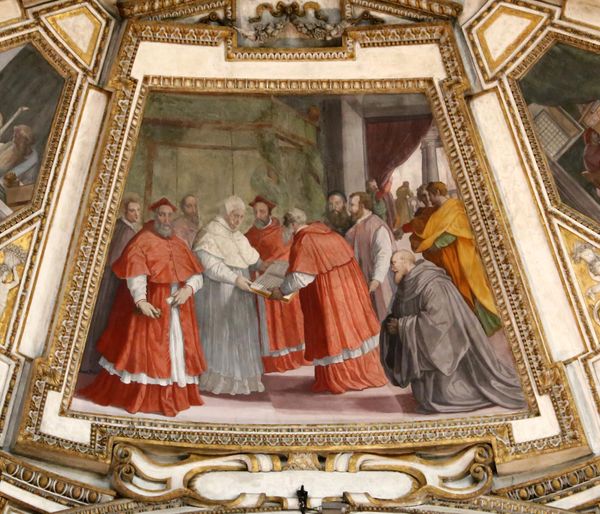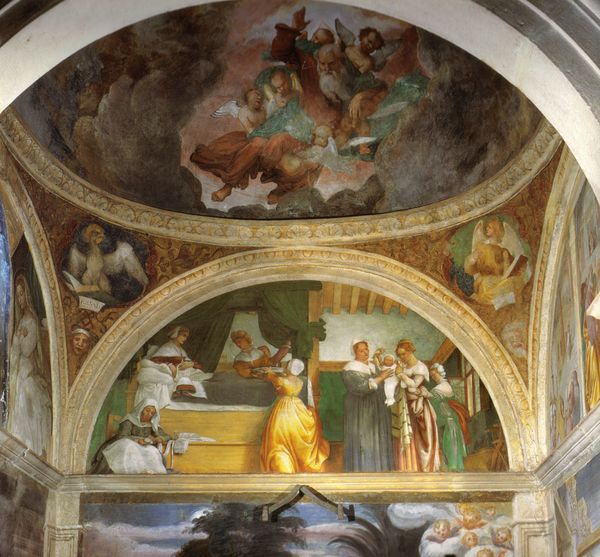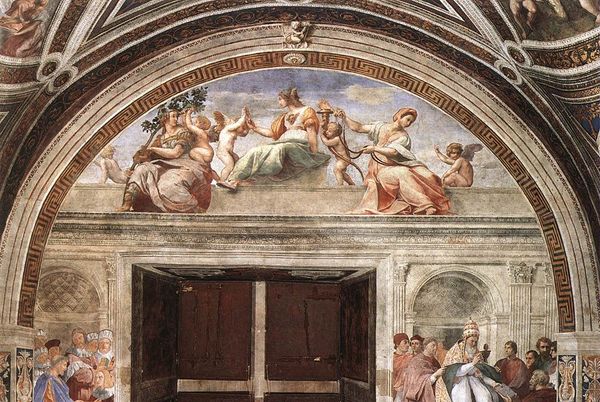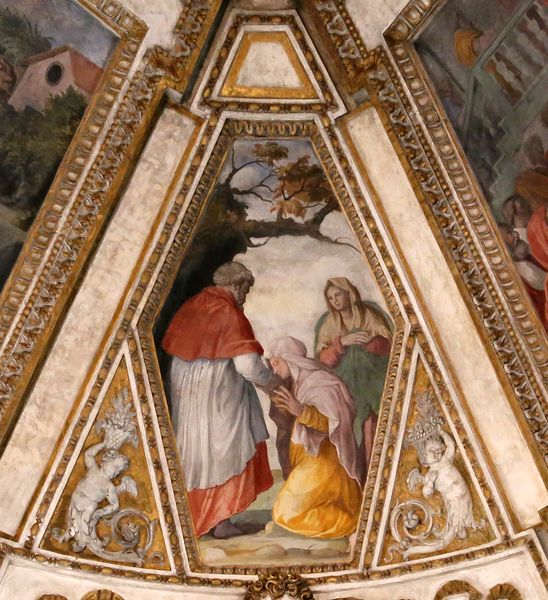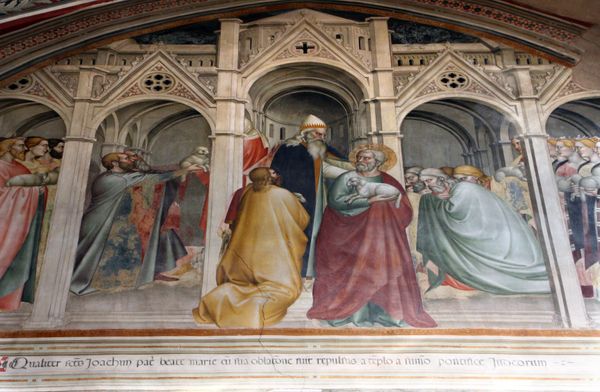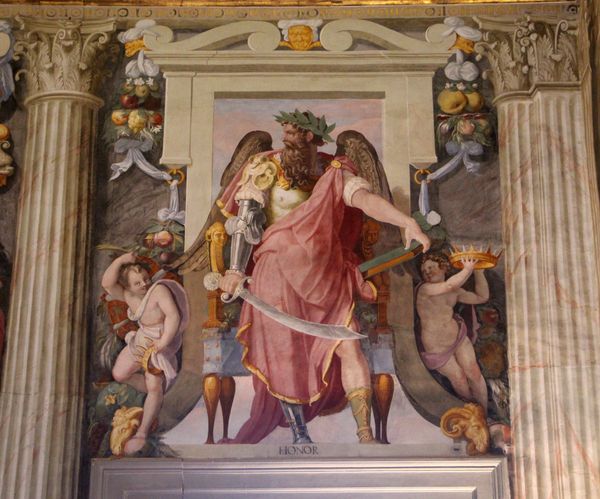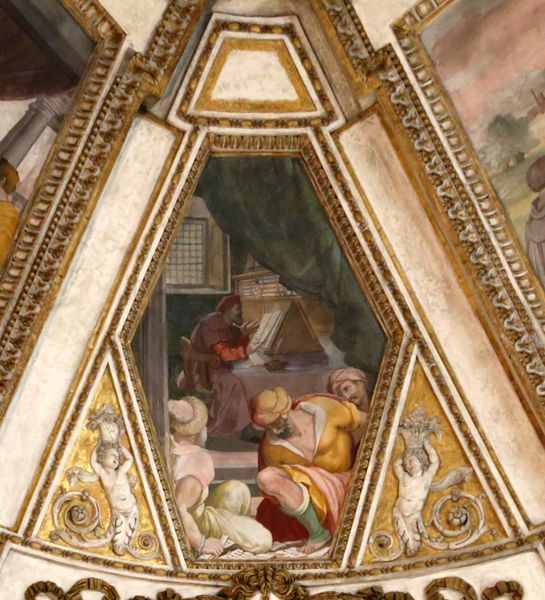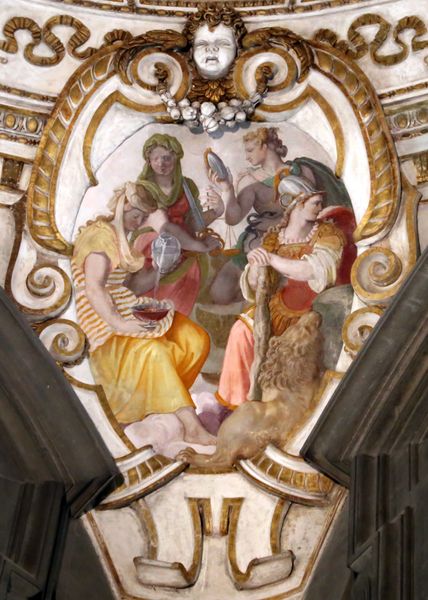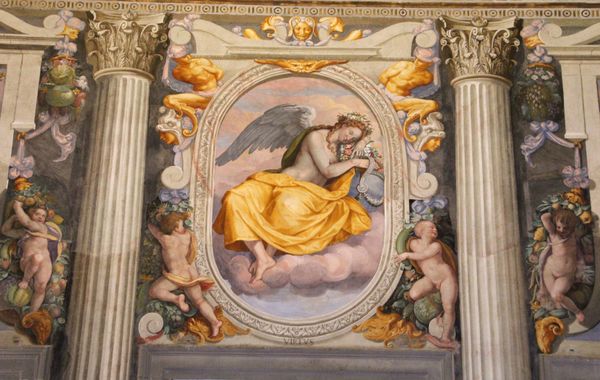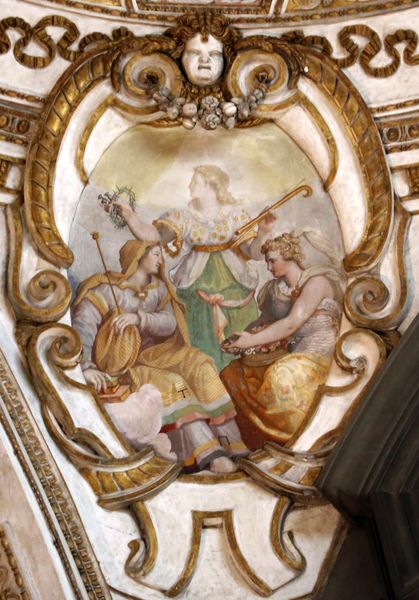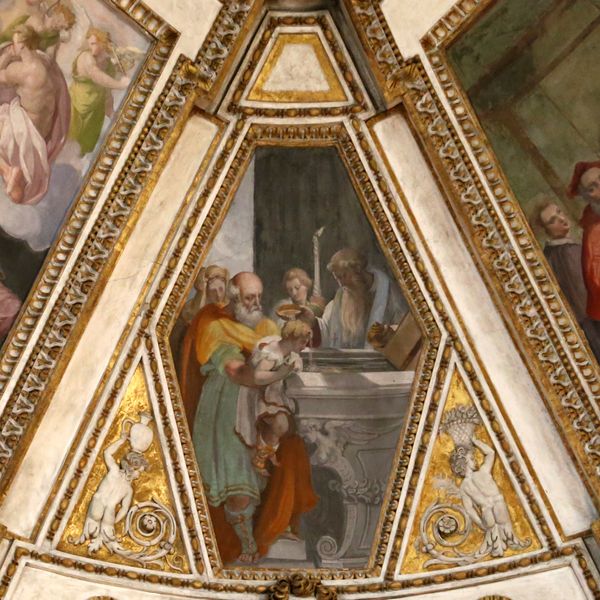
tempera, painting, mural
#
portrait
#
narrative-art
#
tempera
#
painting
#
figuration
#
history-painting
#
academic-art
#
italian-renaissance
#
mural
Copyright: Public domain
Curator: This mural by Alessandro Allori, completed in 1577, is part of a series within Santa Maria Novella, Florence. It illustrates scenes from the life of Saint Jerome, offering a fascinating glimpse into religious and intellectual life during the late Renaissance. Editor: Wow, the colors are unexpectedly muted for that era, almost pastel, except for those splashes of bright red. And there's something theatrical about the composition—like we're peeking into a stage play, maybe? Curator: Absolutely. Allori masterfully employs narrative strategies, situating Saint Jerome within the visual culture of his time and inviting critical exploration. The placement, the clothing... it all reflects hierarchical structures. Note how the garments obscure individuals and create these blocs of privilege. Editor: Right? And it is as though those gathered are so important that Allori made sure we see how fancy their outfits are. But what do you make of the relatively restrained emotion? There is little intensity and emotion. Is Allori subtly critiquing their supposed religious fervor? Curator: That's insightful. It opens up questions about the representation of faith, or perhaps even its perceived performance. If we apply contemporary feminist theory, one might question the limited agency of certain figures and who this painting was made for and for whom it speaks to, not necessarily *of.* Editor: Whoa. Never thought of it that way! It feels like a loaded room in terms of power. Almost makes you wonder, were these supposed 'holy men' actually that virtuous or was there a struggle that Alori captured? Curator: Precisely, understanding that historical context allows a contemporary audience to assess power relations, societal expectations, and their lingering relevance. It isn’t just about St. Jerome. Editor: It makes you rethink hagiography entirely, doesn’t it? A story of a good person may not necessarily make it so if it reflects also systemic flaws that, painted just so, are clear to those who have eyes to see. A mural about supposed righteousness can also expose hidden truths, who gets a voice, whose actions are glorified, and who stays on the margins of the masterpiece. It's food for thought for sure.
Comments
No comments
Be the first to comment and join the conversation on the ultimate creative platform.
